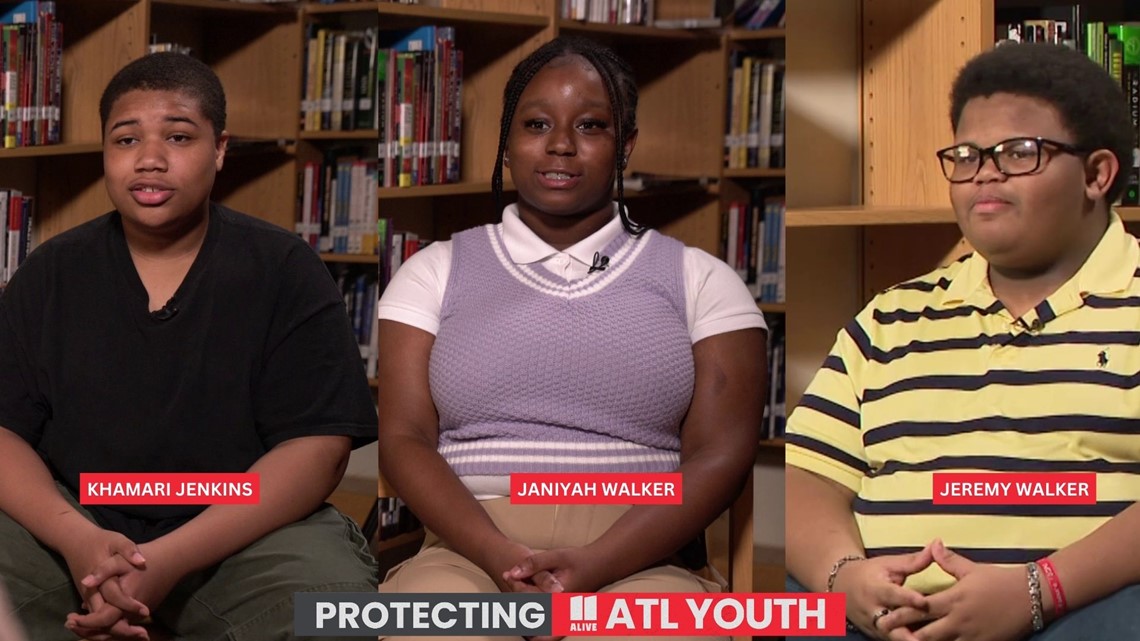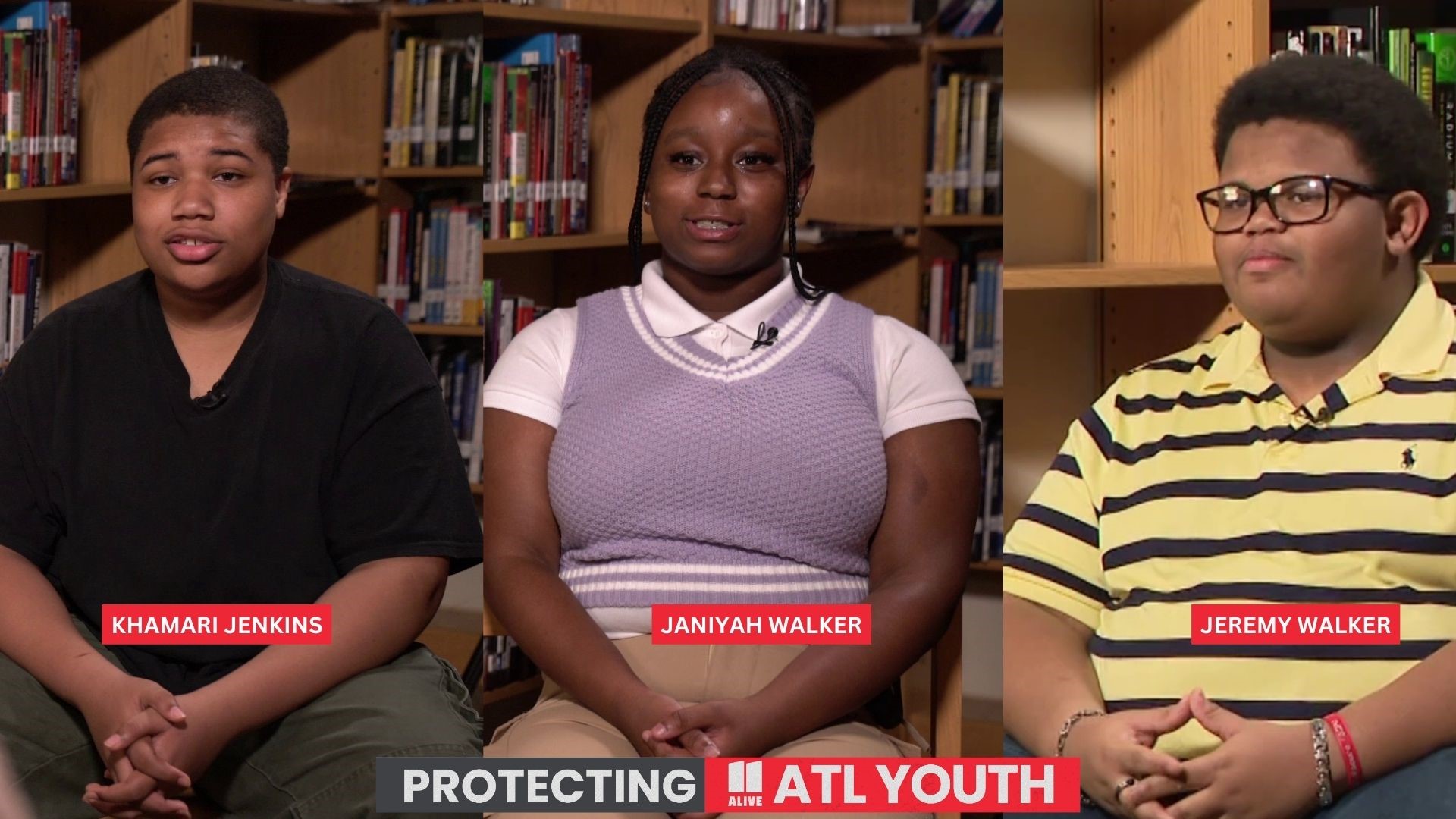ATLANTA — For people over the age of 40, social media didn't really impact their lives when they were teens. When introduced it was surface level - a place to connect with others.
But now teens are dealing with an entirely new landscape, in which the wrong step could result in missed future opportunities, bullying and even suicide.
In preparation for our second community conversation, 11Alive sat down with three teenagers at Columbia High School to discuss the impact of social media on teens today.
Why is the discussion about social media important?
Most teens are on social media, with Pew Research showing that 96% of the 1,316 US teens aged 13 to 17 have at least used YouTube in 2022. The team asked teens about ten platforms; TikTok is used by two-thirds of teens, while around six-in-ten use Instagram (62%) and Snapchat (59%). Minor percentages report using Twitter (23%), Twitch (20%), WhatsApp (17%), Reddit (14%), and Tumblr (5%).
"Social media is something each of us gets on every morning or every day," Janiyah Walker, a rising 10th Grader at Columbia High School, said, "when we are bored or need something to do."
And teens are using these apps constantly; according to Pew, a notable 19% of users report using YouTube almost constantly, making it the platform with the highest percentage of constant usage among the mentioned social media apps. Meanwhile, approximately 16% and 15% of users claim the same level of frequent engagement with TikTok and Snapchat, respectively.
"Social media can impact teens in many different ways," Jeremy Hall, a rising 10th Grader at Columbia High School, said.


How does social media add to teens' daily pressure?
There are several ways that social media can put stress on teenagers who are already going through many changes emotionally, socially and physically.
Having unfiltered access to the world and others can be unsafe and have several adverse effects on those still growing and learning.
"I think it really takes a toll on them. I think it affects everyone that watches it," Khamari Jenkins, a rising 10th Grader at Columbia High School, said.
And without proper guidance online, teens can get themselves into dangerous situations.
Cyber-bullying and Imposter Syndrome
Peer acceptance is crucial for adolescents, akin to a politician's image. Social media's real-time feedback, like "likes" and polling data, fuels the desire for a cooler image. Teens meticulously curate online identities, seeking acceptance.
"You could be painting a false narrative, and it can make you feel some type of way," Walker said.
Boys compete for attention, while girls sift through photos for the perfect post, according to Dr. Steiner-Adair with the Child Mind Institute. This pressure, amplified by seemingly perfect lives on social media, creates traps for teens. Photoshopped profiles add to the confusion; some struggle to represent their true selves online.
"I read that 86% of (people) 16 to 24 feel like social media negatively impacts their happiness. Low self-esteem, depression, anxiety," Hall said quoting a 2022 statistic from Just Say Yes.
This, among other situations online, can lead to bullying. In a recent story from 11Alive, one mother told viewers the plans for her 16-year-old daughter's funeral who died by suicide in July.
RELATED: She touched her daughter's cold body and realized she was gone. The 16-year-old died by suicide.
Azaria White was a sophomore last year at a public school in Atlanta, but her mother said she was having issues and switched to virtual learning in January.
“It became a problem to where no one wanted to sit with her in the lunch room and it made her feel really bad so, then we took her out,” Lynita Rugless said.
After her death, her mother said cyberbullying pushed her daughter over the edge. She found her online message history.
“Multiple message of people saying mean things to my daughter, harassing her, telling her to go kill herself,” said Rugless.
And this is not uncommon; Pew Research reported in 2022 that nearly half of U.S. teens ages 13 to 17 (46%) report ever experiencing at least one of six cyberbullying behaviors:
- Offensive name-calling
- Spreading of false rumors about them
- Receiving explicit images, they didn’t ask for
- Physical threats
- Constantly being asked where they are, what they’re doing, or who they’re with by someone other than a parent
- Having explicit images of them shared without their consent
Online Grooming and General Safety
Human traffickers use "sextortion" to manipulate children on social media and gaming sites. Sextortion involves using power or blackmail to exploit victims sexually, with threats of exposing explicit images or personal details.
"A lot of people can be on social media," Jenkins said. "There could be negative people on social media, not just positive people."
Children are recruited for sex trafficking through social media, regardless of high-risk factors. Traffickers engage potential victims by liking, commenting and befriending them, gathering information for grooming and recruitment.
Grooming can occur on messaging apps and websites, where traffickers persuade victims to send inappropriate pictures, later using them for extortion. They target vulnerabilities, build trust, and gradually encourage victims to share more explicit content. Eventually, traffickers shift communication to less monitored platforms, coercing victims to share or sell illicit pictures online for their benefit.
"You can basically chop social media into three categories: positive, negative, and ugly," Hall said.
Teens are likelier to share too much personal information online, which could lead to broader safety concerns for them and those around them, including family.
"One thing about our generation is we tend to record everything," Walker said.
Tips to cut down on teen social media usage
- Create boundaries: Limit using phones, tablets, and computers for at least one hour before bedtime and through the night to ensure you get enough sleep.
- Keep mealtimes and in-person gatherings device‑free to help build social bonds and engage in two‑way conversations with others. Connect with people in person and make unplugged interactions a daily priority.
For parents and caregivers
- Create a family media plan: Agreed-upon expectations can help establish healthy technology boundaries at home – including social media use. A family media plan can promote open family discussion and rules about media use and include topics such as balancing screen/online time, content boundaries, and not disclosing personal information.
- Create tech-free zones: Restrict the use of electronics at least one hour before bedtime and through the night. Keep meal times and other in-person gatherings tech-free. Help children develop social skills and nurture in‑person relationships by encouraging unstructured and offline connections.

